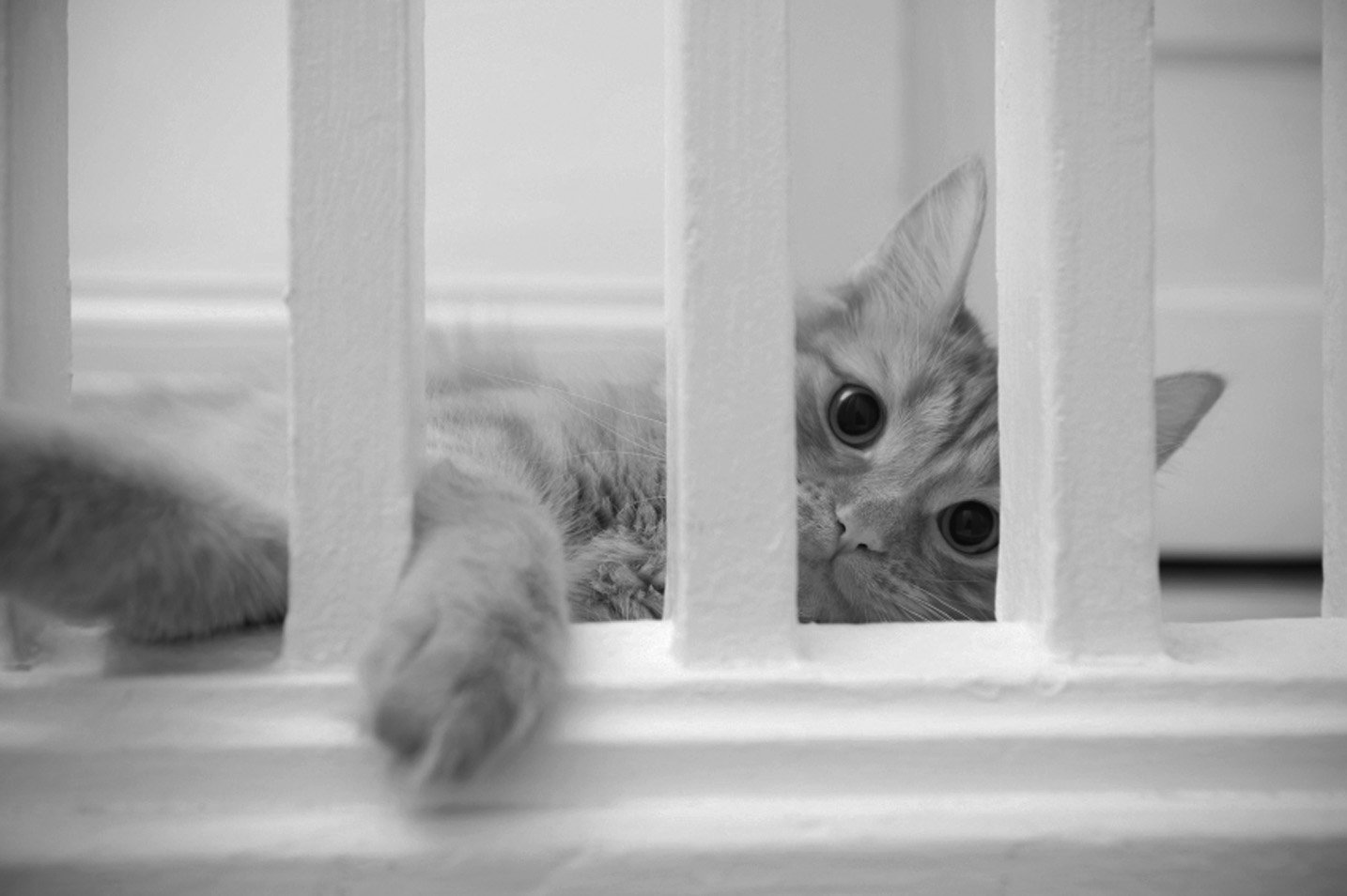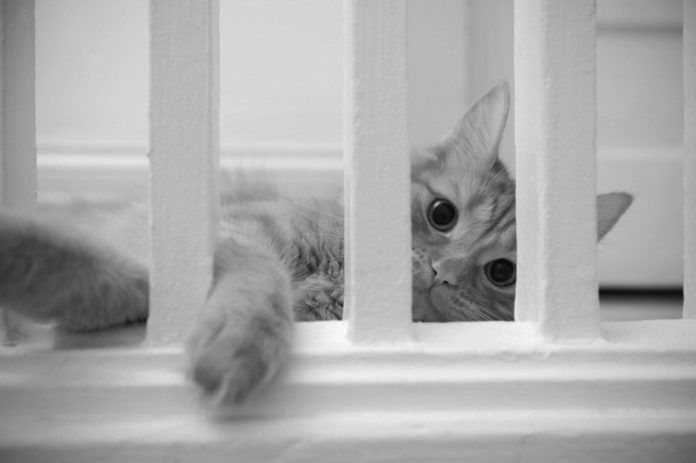@ISTOCKPHOTO


[From Tufts January 2010 Issue]
Before Dave and Jody Rundle embarked on a major home renovation project two years ago, the Santa Barbara, California, couple sat down and planned every step of the process — including a discussion on how to make life as stress-free as possible for their three cats, Izzy, Smudge and Blue.
“We were fortunate that we had an extra bedroom where we could put the cats while the demo work and rebuilding was going on in other parts of the house,” says Jody Rundle, who spent a year in the throes of construction. “We put everything in the room that our cats might need — food and water bowls, a litter box and their beds.”
Even under the best of circumstances, the noise, dust and overall chaos of home remodeling is enough to drive people a bit bonkers, so it’s easy to imagine how stressful construction can be for cats, who thrive on calmness and consistency in their daily lives. When their schedule is disrupted, cats can start exhibiting a number of undesirable behaviors; one of the most common is urine marking.
Inappropriate urination
A home remodeling project is one of the top 10 reasons why cats start urinating around the house,” says Nicholas Dodman, BVMS, a veterinarian and Director of the Animal Behavior Clinic at Cummings School of Veterinary Medicine at Tufts University. “To the owner, it’s mysterious when they discover that their formerly house-trained cat starts piddling all over the place. It’s not a litter box problem; it’s an anxiety issue.”
Dr. Dodman goes on to explain that cats will usually urine mark in strategic locations around the house to let owners know what they are nervous about.
“If a cat is anxious about a construction worker in a certain part of the house, the cat may go in after him and mark around the area where he’s been,” he says. “Workers are seen as invaders and a sensitive, territorial cat will not appreciate them being in the house. As far as the cat is concerned, she can’t wait for the workers to go. As an owner, you should do your best to keep them separated.”
@ISTOCKPHOTO


If there is one word to describe cats, it’s this one: territorial. Yes, cats belong to people, but they really belong to places.
As Dr. Dodman points out: “We’ve all heard amazing stories of cats who have traveled great distances to return to their former homes after their families have moved. Well, it’s the same with a construction project. Here’s a cat: she has her house — her territory — and a very powerful instinct to defend that space.”
He continues, “Then here comes a work crew and all of a sudden, a normally confident, sweet cat turns aggressive and starts hissing or biting or a shy cat may retreat as far away from the construction zone as possible. When the workers are gone, however, they’ll sneak around and mark their territory with urine and they will continue doing so even after construction is complete.”
If your cat begins urine marking, you need to take a proactive approach to solving the problem as quickly as possible.
“Start by purchasing a black light from a hardware store,” suggests Dr. Dodman. “In the dark, shine the light in every nook and cranny of your house and pinpoint every urine mark with the fluorescent light. Then, aggressively treat those marks with an odor remover — my favorite is a product called Zero Odor. For cats who are determined to continue marking, short-term use of an anti-anxiety medication may be necessary to help get them back on track.”
Dr. Dodman also advises clients to be cognizant of their cats’ safety and well-being during construction.
“Map out a detailed floor plan of your home and look for rooms or certain portions of the house that can be closed off to provide a secure, quiet place for your cats,” he says.
In addition, he suggests protecting cats as much as possible from the sights, sounds and smells associated with construction. Putting up plastic dust screens or blankets can not only help reduce the amount of dust and debris in the air, but they can also shield a cat from getting full visual access to the work and workers. And setting a radio to a station with soothing music or turning on a television can help mask the sounds of hammering and drilling.
“Make your cats’ environment as happy and user-friendly as possible,” recommends Dr. Dodman. “Instead of sitting around all day worrying, your cats can relax or play.”
Weigh housing options
Many owners contemplate boarding their cats at a kennel during the craziness of construction. For some, this option works well, especially if the cat is outgoing and tolerant of other cats. For others, however, being shipped off to a boarding facility is even more stressful than remaining at home. A good compromise: ask a friend, family member or neighbor to care for your cats during the most disruptive portion of the project or anytime your cat might be in danger of exposure to dangerous substances.
One of the Rundles’ cats, for instance, managed to escape one evening and treaded across a newly refinished hardwood floor.
“Izzy made it all the way across the kitchen before we noticed him,” recalls Jody Rundle. “His paws were sticking to the floor, which could have been really dangerous if he started licking his paws and swallowed the wax.”
Aside from this one mishap, she is still glad she decided to keep her cats at home rather than boarding them.
“After looking into the cost of boarding our cats for a year, we felt it would be much more economical for them to remain at home,” she says. “Besides, Blue, our senior cat, gets extremely anxious around strange cats. All in all, we were very lucky. Our cats didn’t get overly stressed and today, we’re all really enjoying our ‘new’ home.”




